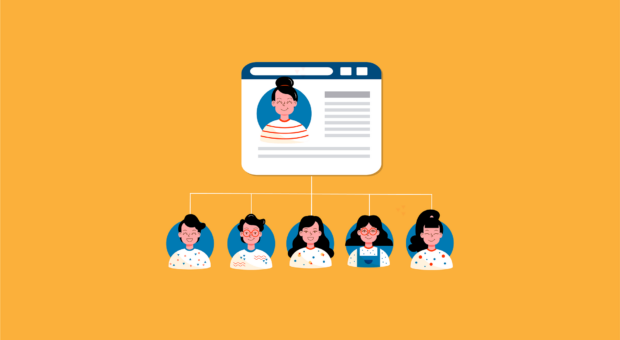
As a marketer, you’re about as close to your brand as anyone can be. You know the ins and outs of what works for your brand and what doesn’t. On the flip side, you probably also know that this close perspective can sometimes make it difficult to look at your marketing and branding efforts with a critical eye. If you’re asking yourself, how can I ensure that my efforts are really working for my prospects and customers? Well, cue customer journey mapping – one of the best ways to not only take stock of your marketing efforts at every marketing funnel stage, but also to analyze how your prospects and customers are feeling at every touch point. Customer journey mapping is a great way to put yourself in your customers’ shoes, understand their emotions and feelings, look out for pain points, and truly understand how to optimize your marketing campaign(s).
We’ll take you through our approach to customer journey mapping and show you exactly how it can help you streamline your marketing plans and reveal your tactical priorities.
What is the Customer Journey?
Put simply, the customer journey is the process through which a lead or customer interacts with a brand in order to achieve a specific goal (e.g., a conversion). Your conversion goal for your customer journey could range from gaining blog subscribers or newsletter signups, to customers actually making a purchase on your site.
As you start to consider this process, think about the many ways you engage with customers when they’re on your site, social media, or interacting with your brand. Your brand undoubtedly has several touch points with the lead or customer throughout the customer journey, including:
- Website
- Landing pages
- Email newsletters
- Organic or promoted social media posts
- Paid advertising
- Blog articles
- Search engine listings
Now that we have a general understanding of the touch points with a customer (a.k.a. the customer journey), let’s dive into the mapping…
What is a Customer Journey Map?
A customer journey map is a visual representation of the customer journey that maps out all the touch points between your brand and your leads/customers.
It’s important to note that you can use customer journey maps to track just one part of the customer journey, or can use them to look at the entire journey holistically. For example, you can simply look at the journey a customer takes between an awareness stage tactic such as a search engine marketing and when they sign up for emails from your business, or you can look at their entire interaction with your brand from awareness through to actually making a purchase and (hopefully) becoming a loyal customer.
Using Customer Personas in Journey Maps
Last month, we reviewed how to create and use customer personas for your inbound marketing and content marketing strategies. Well, customer personas can also help increase the accuracy of your customer journey maps. See? There’s a method to our madness.
Looking at the customer journey as it specifically relates to your different customers and their unique preferences and needs is extremely valuable, so you should consider creating separate journey maps for each persona. As you do this, think about the customers’ demographics, motivations, needs, frustrations, and goals (all of which you noted in your customer personas) and incorporate those into your journey map to get a more detailed view of the journey for your key customer groups.
Now let’s move away from the “how it works” to the “how on earth do I do this?” We’ve got you covered.
How to Create a Customer Journey Map
A better understanding of your customers’ experiences with your brand sounds great, right? But how do you actually go about creating an accurate and detailed customer journey map? Well, we’re kind of pros at this, so let us help!
Customer journey mapping is a complex process that takes some time to execute and should always be rooted in real data and structured around very specific goals. Similar to customer personas, there may be moments where you have to make some educated guesses about the journey or your customers’ emotions, but those guesses should always be based on what you do know concretely – for example, if you can see that one of your key web pages has a high bounce rate, it’s likely that there is something thorny about the page experience, layout, or content that needs improvement.
So let’s get into it and start journey mapping!
Step 1: Gather your team
Customer journey mapping starts with assembling the right team of internal stakeholders from your business. You’ll want to involve all key marketing personnel in the process, and you’ll also want to bring in representatives from your sales and/or customer service teams. These are the people who interact with your customers regularly and hear tons of feedback, receive questions, and troubleshoot problems with them. You’ll also want to involve your in-house web development and/or UX (user experience) stakeholders. These are the people who know your website like the back of their hand and can help you dive into what is or isn’t working about your website.
Step 2: Set your goals
If you’re going to make the investment in customer journey mapping, you should have very clear goals for what you want to achieve with the journey map. Are you looking to increase lead capture? Do you want to improve your customer service experience? Do you want to sign members up for a loyalty program? Do you want to increase product sales? There are so many things you can learn from a journey map, so spend some time thinking your goals over with your journey mapping team, and outline four or five goals that will help structure the mapping process from start-to-finish.
Step 3: Make a list of your touch points
Sit down with your team and list out all of the touch points in the customer journey at the awareness, consideration, decision, and loyalty stages. Make sure not to leave any touch points out, no matter how small or insignificant it may seem. The devil truly is in the details when it comes to customer journey mapping.
Step 4: Gather data for each touch point
Data you’ve collected from your various touch points will be key to understanding performance within the customer journey. Here are a few examples of data sources for some common touch points:
- Email Marketing: Performance data from your marketing CRM (customer relationship management system) or email platform such as open rates, click-through-rates, conversion rates from emails, popularity of certain links or calls-to-action, subscriptions, unsubscribes, etc., will help you understand how well your email content resonates with your audience and what generates the most engagement.
- Website Performance/Search Engine Optimization (SEO): Google Analytics is a powerful tool for marketers. It provides data that dives a little deeper into your website traffic, content performance, and conversion goals, while also giving you some great insights into your audience. You can learn about their demographics, interests, behavior, and their flow through your website, meaning that you can dial in your analysis to look at something as niche as how well your content performs or how high your conversion rates are for people in a particular age group, gender group, and interest category. This is valuable information when it comes to mapping the customer journey and understanding customers’ reactions to/with your digital touch points.
- Social Media: It’s 2022 – so that means that if you have a business, chances are you have one or multiple social media profiles promoting the work you’re doing. Not only do large numbers of people turn to social media as a source of news and information, but they also interact with social media content in ways that allow you, as a marketer, to get a unique picture of their needs, preferences, and behaviors. Before you start journey mapping, take a look at your social media metrics and look at things like engagement, number of followers over a defined time period, content click-through-rates, impressions and reach, and referral traffic from social. It’s also a good idea to take an audit of comments and reactions to your social media content and see if you can identify any patterns in customer feedback.
Pro Tip: You can also audit Google reviews in the same way you audit social media engagement to identify trends in your customers’ experiences.
Step 5: Gather anecdotal feedback from your team members
Anecdotal feedback is just as important as hard data from your digital touch points, as it lets you get to know more about your customers and their experiences from the members of your team who regularly interact with them. Set up some time to sit down with your Customer Service or Sales teams and ask them if they’ve noticed any trends in their conversations with customers, or if they get the same questions time and time again across your customer base. Are there any pieces of feedback or commonplace paint points that your team is identifying? If yes, then that’s a good thing to add to the data you’ve already gathered. Please note that if you don’t have a sales or customer service team, you can use your own knowledge about your customers combined with social media or Google reviews.
Step 6: Make it visual
You’ve come a long way by doing a lot of front end research and data collection – now for the fun part: actually drawing out your customer journey map. There are a variety of different ways you can create it. You can do this by hand on a whiteboard or piece of paper (be sure to take a photo or store in a safe place so you don’t lose your work!), use a spreadsheet, or borrow a premade template like these from Hubspot. We prefer to use editable templates from Figma to lay ours out according to the stages of the marketing funnel. At the top of your map, list out all of the stages of the funnel from left to right, and then list out all the corresponding touch points below each stage. Then, use your data to surmise what actions users are taking at each touch point and note them on your journey map. Next, and again using your data, note the customers’ general emotions as they interact with and take action at each touch point. You can also use this step to highlight the most helpful pieces of feedback you’ve collected from customer reviews or from your customer service or sales team. Be sure to look for and highlight all pain points and areas of delight customers experience along the journey.
Now you have an accurate representation of the customer journey as it stands currently. Next, you’ll need to figure out what opportunities there are to improve it and create your “ideal” customer journey. On your map, create another row below your customer reactions and work with your team to list out opportunities and tactics that will help ease the pain points and delight your customers. This final step will serve as your guide for marketing planning and journey optimization.
If you want to go one step further – and we recommend this if you have the resources and want to focus on holistic optimization of the journey – you can create an entirely separate map that represents the ideal journey. It will look similar to your initial map but won’t include any of the pain points or areas of confusion that exist in the current journey. Think about what strategies and tactics you’ll need to utilize in order to ease the pain points and how they can be applied to the journey realistically depending on your resources. This “ideal journey” will serve as a guide for the implementation of your ongoing marketing strategies.
The Takeaways on Customer Journey Mapping
Customer journey mapping is beneficial because it allows you to approach your marketing planning in an informed way, guided by robust data, an accurate representation of what is and isn’t working for your customers, and a step-by-step plan for mitigating any pain points in your journey. It takes quite a bit of effort to map the customer journey, but ultimately it will make you a much smarter marketer.
If you are curious about inbound marketing and its benefits for your business, check out these previous blog posts that give an inside look at what inbound is and how it could be useful to your business:
- Everything You Ever Wanted to Know About Inbound Marketing – Why Inbound?
- Inbound Marketing 101: Customer Personas and Business Use Cases
And, if you want to map your customers’ journeys but need some assistance or advice, the inbound marketing team at VONT will be glad to help you out, so give us a shout!
About VONT Performance Digital Marketing
At VONT we believe that change is the only constant in the digital world – and that excites us. When tools and environments are constantly changing, new opportunities to help our clients achieve success are constantly arising. Each new advertising technology, social platform, or design approach allows us to improve on the results we achieve for our clients.We believe in this idea of continual fine-tuning so much that we named our company VONT, which means to achieve exponential improvement in incremental steps. It is our core belief, and the reason why we are not simply a web design company or simply a digital advertising agency, but rather a long-term, single source partner providing a comprehensive array of web development and digital marketing capabilities.


